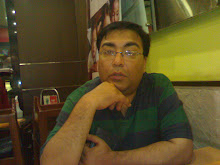I recently came across an intriguing piece of news on the online WSJ about the efficacy of the 64 Slice CT Scanner. I am familiar with this piece of high tech gadgetry because I was tasked with marketing the benefits of CT Angiograms, when Max Hospital had installed it at the Max Devki Devi Heart and Vascular Institute. I recall we were in a race with Apollo Hospitals, who had also bought a similar machine and both of us wanted to claim that we were the first to offer CT Angios in the city of Delhi.
The WSJ piece titled 'Doubts grow over High Tech CT Scans of the Heart' refers to a study published in the Journal of American College of Cardiology and concludes that 'in more than 50% of the subjects, CT angiography 'detected' coronary obstructions that simply were not there'. The study was funded by the Dutch government and used CT scanners made by Siemens, Philips and Toshiba.
Researchers enrolled patients with chest pain who were planning to undergo conventional angiograms and offered them a CT Angiogram as well. On comparing the results it was found that the CT's were very good in identify blockages, where they existed, however alarmingly they also indicated blockages in many patients, where none existed.
These findings also corroborate the findings of another study led by John Hopkins researchers published in the New England Journal of Medicine last month, which also concluded that 'CT Angiography can not replace conventional angiography at present'.
This report made me go back in not too distant a past, when we had started marketing CT Angio's in Delhi offering a complete and reliable heart scan in less than 8 secs. Our rivals at Apollo Hospitals went a step further by branding the scan a 'instascan' and offering it to lay public as a preventive heart scan.
What are the dynamics of these high tech acquisitions in a hospital and how all this really works?
Hospitals are always looking at opportunities to differentiate. A new machine allows them an edge over everybody else (or at least till someone else acquires it as well). They get an opportunity to position themselves as 'the most modern/advanced hospital in town'. The referring doctors are sent glossy kits explaining the benefits and virtues of the new equipment, a 'launch' function is organised, CME's are held, and advertisements released to ensure hype and thereby business.
The sellers of these machines are keen to oblige with great deals involving deferred payments, credits and deep discounts, research tie ups and marketing support. Once the first machine is sold, the other hospitals as well as the new upcoming ones, willy nilly go for the them because they can not be seen without one! These in the hospital world are the ultimate status symbols.
What is also of great importance is that these machines allow a wanna be hospital to attract top notch talent from its downtown rivals. Thus Max attracted Dr. Ashok Seth and his team from an older and well established hospital like Escorts as well as Dr. Ajeya Jha (a neuro surgeon) from Apollo on the promise of the 64 slice scanner and flat panel cath labs and an intra op MRI called the Brain Suite respectively. Artemis too did a Max and hired Dr. Devlina Chakravorty a well known radiologist (from Max ) offering her toys like a 3T MRI, a 64 Slice CT Angio, PACS, 4D Ultrasounds and a PET-CT Scanner and a promise of directing medical research using them. Artemis also hired a team of oncologists from Rajiv Gandhi Hospital by tom tomming the IGRT capable Linear accelrator and a PET CT scanner.
This is not to blame the doctors for falling pray to the lure of smarter technology. At the end of the day, all of them do believe that the use of these will help in faster diagnosis, enhance their medical outcomes and provide superior and better care. Hospitals too believe that they will be able to attract better doctors and more patients, which in itself is a legitimate goal.
I believe all this is fine as long as the equipment has a scientifically proven benefit, contributes someway in the enhancement of care (early diagnosis, reduces risk, cuts hospital stay) and delivers all that it promises. If that does not come to pass and subsequent research negates these benefits, than I believe that the manufacturers of these machines are taking everyone for a ride and must be stopped. There should be sufficient evidence of the benefits of these machines before ordinary people like me are put through tests on them.
http://blogs.wsj.com/health/2008/12/16doubts-grow-over-high-tech-ct-scans-of-heart/

No comments:
Post a Comment